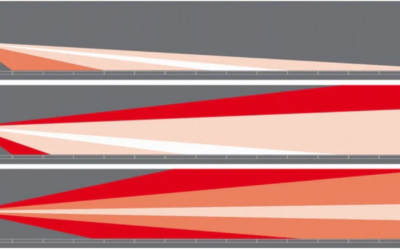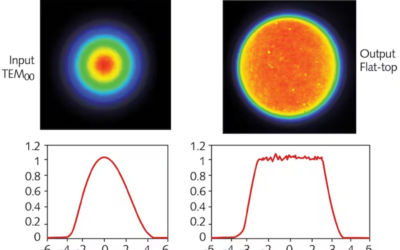A dispersive prism is an optical element used to break up light into its different wavelength components – a phenomenon discovered by Sir Isaac Newton. By doing this, the prism separates light of varying wavelengths, with longer wavelengths (red) deflecting at a lesser angle than the shorter ones (violet). This phenomenon occurs because the prism’s refractive index varies by the wavelengths of the light. The design of a dispersive prism is critical to its functionality and can significantly impact the quality of the light separation. This article will discuss essential parameters for designing a dispersive prism and provide guidelines for creating an effective and efficient device. For additional information about the different kinds of prisms please read our article “Types of Optical Prisms”

Figure 1. Solar light being disperse by a quartz prism. Image from Kelvinsong
Among the parameters that we need to take into consideration when designing a dispersive prism are:
- Material Selection: The first consideration in designing a dispersive prism is the choice of material. The material used for the prism should have a high refractive index, as this will determine the extent of the bending of light as it passes through the prism. Common materials used for dispersive prisms include glass and quartz, which have high refractive indices and are transparent.
- Prism Shape: The shape of the prism is also an important factor in its design. The most common shape used for dispersive prisms is the triangular prism, as this shape allows for the maximum bending of light and provides the highest degree of separation. However, other shapes, such as the rhomboid or the pentagonal prism, may also be used, depending on the application’s specific requirements.
- Angle of Incidence: The angle of incidence, or the angle at which light enters the prism, also plays a critical role in the performance of the prism. A larger angle of incidence will result in a higher degree of light bending, leading to a more pronounced separation of the light into its component colors. It is important to optimize the angle of incidence for a given application to achieve the best results.
- Size of the Prism: The size of the prism will also affect its performance. A larger prism will generally result in a higher degree of light bending and a more pronounced separation of the light. However, larger prisms may also be more cumbersome and less practical for some applications. It is important to balance the size of the prism with its performance to achieve the best results.
- Coating: Finally, it is important to consider the coating of the prism, as this can have a significant impact on its performance. The coating should be optimized for the specific application and should be designed to minimize the amount of light loss and scatter. Anti-reflective coatings are common for dispersive prisms, as they help to reduce the amount of light lost as it passes through the prism.
Dispersive prisms are used in a variety of scientific and technical applications, such as spectroscopy, where they are used to analyze the composition of materials based on their spectral signature. They are also used in optics and telecommunications, where they can be used to control the dispersion of light and correct chromatic aberration in lenses.
The dispersion of a prism is typically measured as the angular separation between two spectral lines of a particular wavelength. The following formula, which assumes a thin-prism, can be used to calculate the dispersion of a prism:
D = (n – 1) * A
where:
D = dispersion of the prism (in degrees)
n = refractive index of the prism material
A = apex angle of the prism (in degrees)
In conclusion, designing a dispersive prism involves considering several critical factors, including the choice of material, the shape of the prism, the angle of incidence, the size of the prism, and the coating. By carefully considering these factors, it is possible to design an effective and efficient dispersive prism that provides high-quality light separation.





